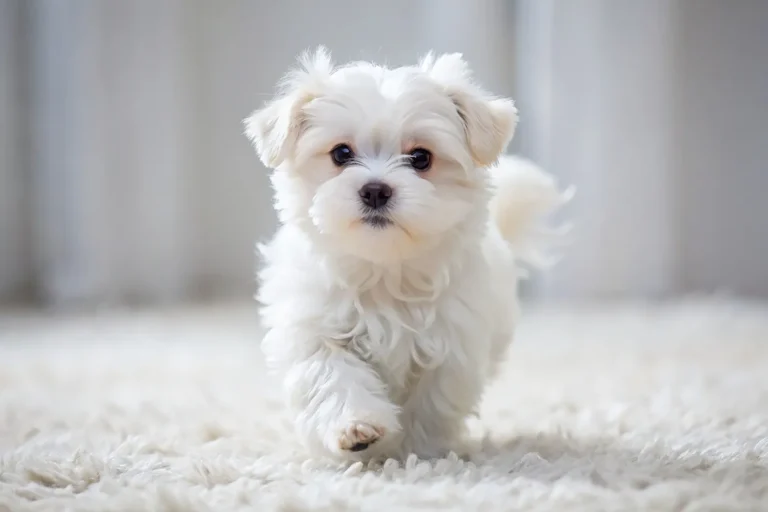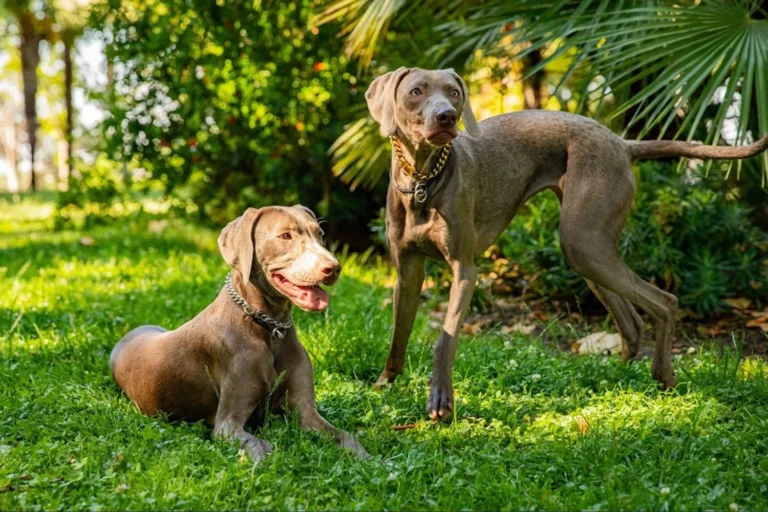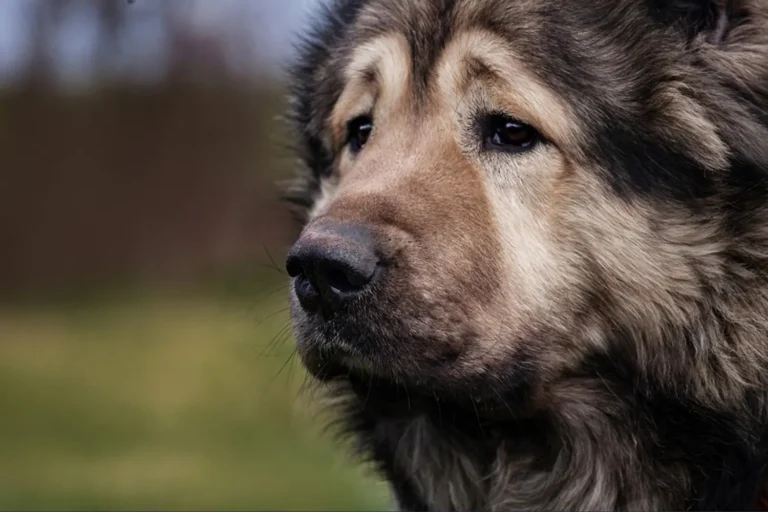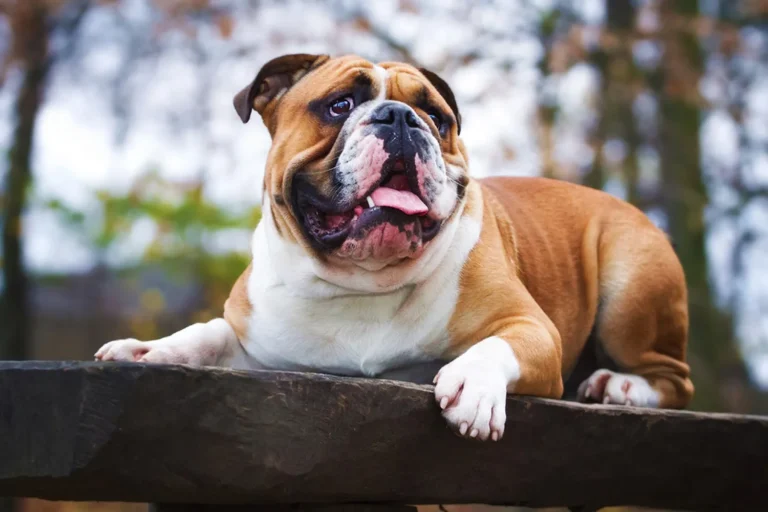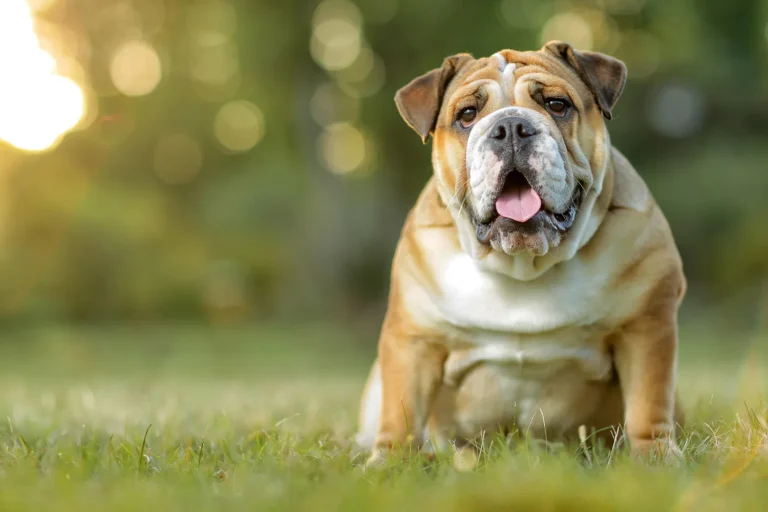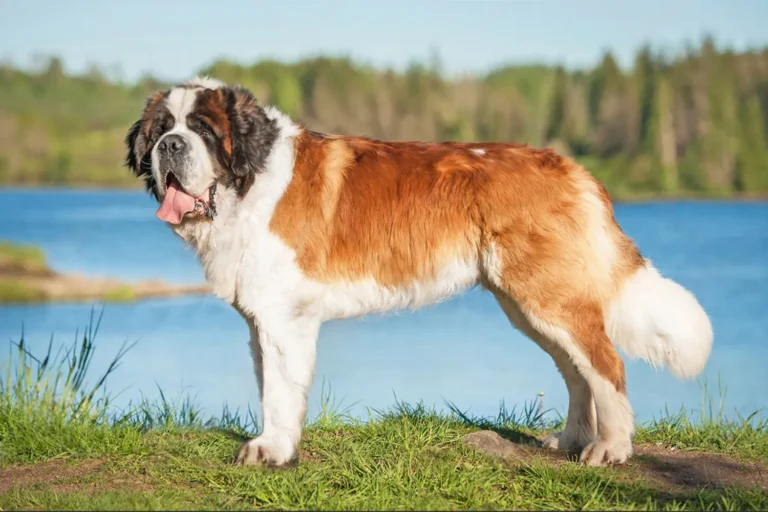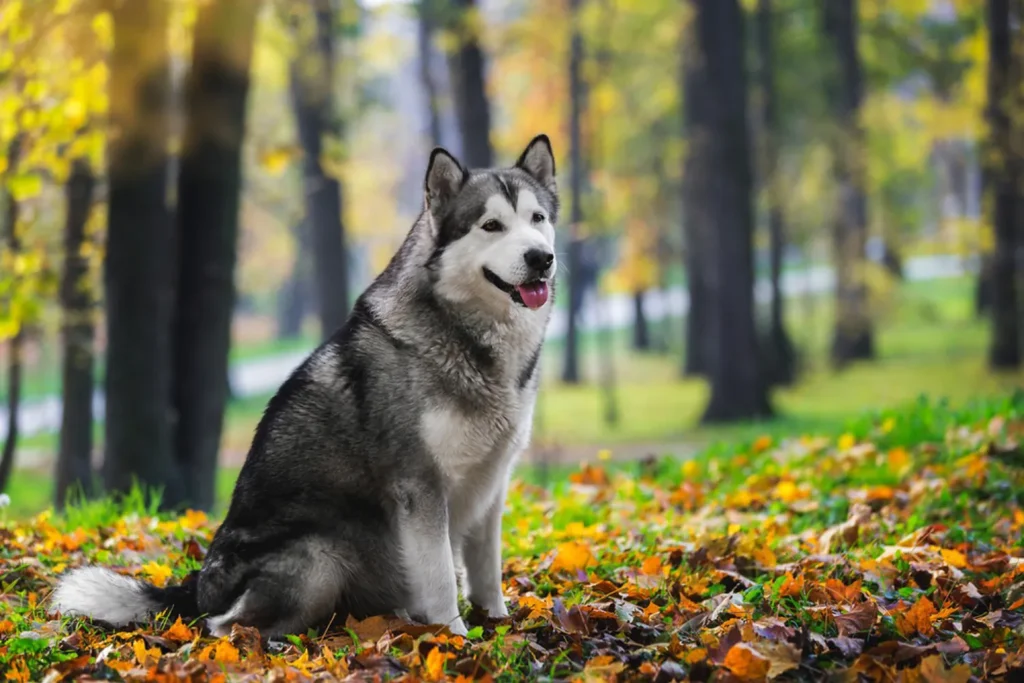
The Alaskan Malamute is a strong, loving powerhouse and one of the oldest Arctic sled dogs built to pull, and built to be with people. The first time I met one named Nanook, he leaned his whole weight on my legs like a living weighted blanket, then trotted off to nuzzle a toddler with the gentlest snuffle. That’s the Malamute charm: big heart, bigger grin, and a tail that waves like a snowy flag.
They’re especially well suited to active, larger families and anyone who loves adventure. Hikes, snow days, backyard games Malamutes are all in. Just be ready for their energy and independence. Early training with lots of praise helps, as does a sturdy leash and a securely fenced yard. They shed like a snowstorm in spring, so a good brush is your best friend. I once jokingly said “Mush!” and got half dragged across the lawn lesson learned: give these ancient “Eskimo dogs” (as they’ve been called historically) a job, plenty of exercise, and they’ll repay you with loyalty, laughs, and lifelong companionship.
What is the history & origin of the Alaskan Malamute?
Picture the far North, wind carving lines in the snow, and a steady, powerful dog leaning into a sled with a kind of quiet determination. That’s the story the Alaskan Malamute was born into. These dogs came from the northeastern Seward Peninsula, developed by the Mahlemuts people who relied on them to pull heavy loads across unforgiving terrain, help with seal hunts, and even stand their ground around polar bears. Their ancestors migrated from Siberia into Alaska alongside the Mahlemuts, which is part of why folks sometimes mix them up with Siberian Huskies. They share a neighborhood in history, but they had different jobs Malamutes were the freight haulers, built for strength and endurance more than speed. I once met a Malamute at a winter festival who leaned into his harness like it was his favorite hug; you could practically feel the history in that gentle, determined pull.
Then came the 1896 Gold Rush, which brought a flood of new dogs into Alaska. Those dogs were mixed and matched for practicality, often changing the local dog population overnight. But the Mahlemuts lived in relatively isolated coastal areas, which helped preserve the original Malamute type. An old timer I met in Nome told me their dogs were considered part of the family, and that quiet isolation was a blessing it kept the breed’s strength, coat, and temperament intact when everything else was changing. Little tip: if someone calls a Malamute a “big Husky,” you have my permission to smile and gently share that they’re cousins with very different resumes.
In 1935, the Alaskan Malamute Club of America was formed, and the American Kennel Club recognized the breed that same year. Many of those early registered dogs later served in World War II as sled dogs, a somber chapter that led to a significant loss for the breed. I remember standing in a small Alaskan museum, looking at a battered leather harness tag from that era, and feeling a lump in my throat these dogs quite literally helped people survive. After the war, dedicated breeders worked carefully to rebuild the population and keep the Malamute’s character intact.
A lot of Malamutes today can trace their roots to the Kotzebues strain developed in America in the 1930s by Arthur T. Walden. That foundation helped set the look and solid structure many of us recognize broad chests, powerful legs, that proud, wolf gray silhouette. A breeder I chatted with in New Hampshire once pulled out a pedigree binder that went back to those early Kotzebue dogs; she said it felt like holding a piece of living history. If you’re ever talking with breeders, ask about lineage, working backgrounds, and how they preserve the Malamute’s original purpose. It’s a great way to find a dog whose heart and body are both built for the life you want to share.
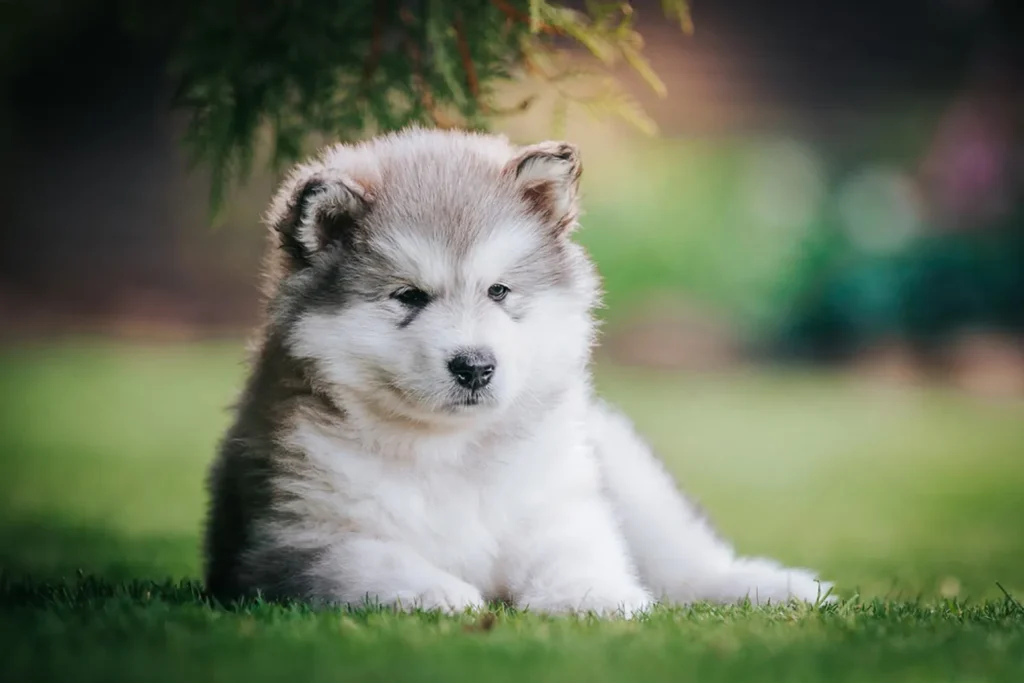
What Is an Alaskan Malamute?
The Alaskan Malamute is a husky type dog that people often mistake for a Siberian Husky until you see them side by side. Malamutes are bigger, heavier, and built more for power and endurance than for speed. Think freight train, not sports car. They have that unmistakable wolfy look with a broad head, a fluffy plumed tail, and a thick double coat that makes them stand out anywhere. Big presence, bigger heart these dogs are large and in charge with marshmallow centers.
Historically used as sled dogs, Malamutes love having a job, whether that’s pulling a sled, cart, or just carrying a backpack on a hike. I used to add a couple of water bottles to my Malamute’s pack, and you could practically see the pride in his step. Despite their rugged look, they’re not great guard dogs; most of them greet strangers like long lost friends. My neighbor’s Malamute, Bear, once escorted the mail carrier to the porch like an honored guest and then asked for belly rubs as payment.
They can be wonderful companions in many types of homes when their needs are met daily exercise, mental stimulation, and consistent training. They’re smart and independent, which is code for “I’ll think about it.” Keep sessions upbeat and varied, and invest early in recall training. A secure yard is a plus; Malamutes are talented diggers and curious explorers. I learned that the day mine landscaped the flower bed all by himself he was very proud of the new crater.
Be ready for grooming. That glorious coat “blows” seasonally, and you’ll see enough fluff to knit a sweater for a moose. A sturdy brush and a good vacuum are your best friends. They handle cold like champs but need extra care in warm weather walks in the cool parts of the day and plenty of water. Give a Malamute purpose, exercise, and love, and you’ll have a loyal, goofy, breathtaking companion who turns heads everywhere you go.
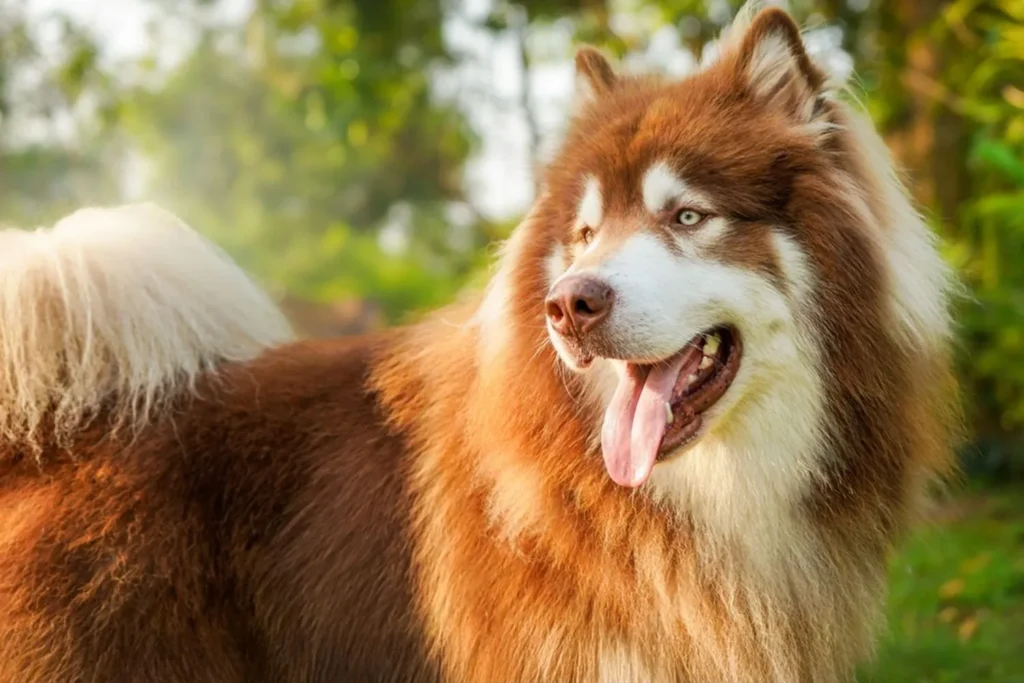
Who Is an Alaskan Malamute Best For?
If you’ve ever seen a Malamute gliding through fresh snow, it’s easy to fall in love. But as gorgeous as they are, they’re not a starter dog. These dogs are tough, powerful, and bursting with energy, and they do best with someone who’s handled strong willed, athletic breeds before. Consistent training and clear boundaries are non negotiable. I remember walking a friend’s Malamute, Kodi, and thinking, “This is like holding onto a furry freight train” wonderful, but you need two hands and a plan.
Despite their wolfy looks, Malamutes are not guard dogs. They’re the type to welcome the mail carrier like a long lost buddy. My neighbor’s Mal would trot over with a toy whenever someone new came to the gate, tail wagging like a metronome. If you want an intimidating watchdog, look elsewhere; if you want a social butterfly with muscles, you’re getting warmer.
They thrive with active, involved families and plenty of space to stretch those legs. A big, securely fenced yard is a huge help, and so is a household that enjoys being outside together. Malamutes are pack minded, so many fit in nicely with other dogs. A sledding club I visited in Colorado had a crew of Mals that moved like one big, happy unit play wrestling after runs, then crashing in a pile like giant, snoring marshmallows.
If you’re the adventurous type, a Malamute will meet you there. They shine in conformation and obedience when you make training fun and firm, and they’re naturals at weight pulling, backpacking, and recreational sledding. Ever tried skijoring? It’s basically cross country skiing with your dog helping pull thrilling with a Malamute who’s built for it. I once borrowed a friend’s Mal for a short skijor loop and got towed like a joyful kite; we both slept very well that night.
These dogs are made for cold, snowy climates. Their extra thick coats are like wearing a parka 24/7, which is great on frosty mornings and less great in heat. If you live somewhere warm, you’ll need to be diligent: early or late walks, shady rest stops, lots of water, and maybe a kiddie pool in the yard. And invest in a sturdy leash, a well fitted harness, and obedience classes from day one your shoulders will thank you.
Bottom line: an Alaskan Malamute is best for experienced owners who want a friendly, hard working companion; families with room to roam; and anyone who hears “Let’s go outside!” and is already tying their boots. If that sounds like you, a Mal just might be your perfect adventure buddy.
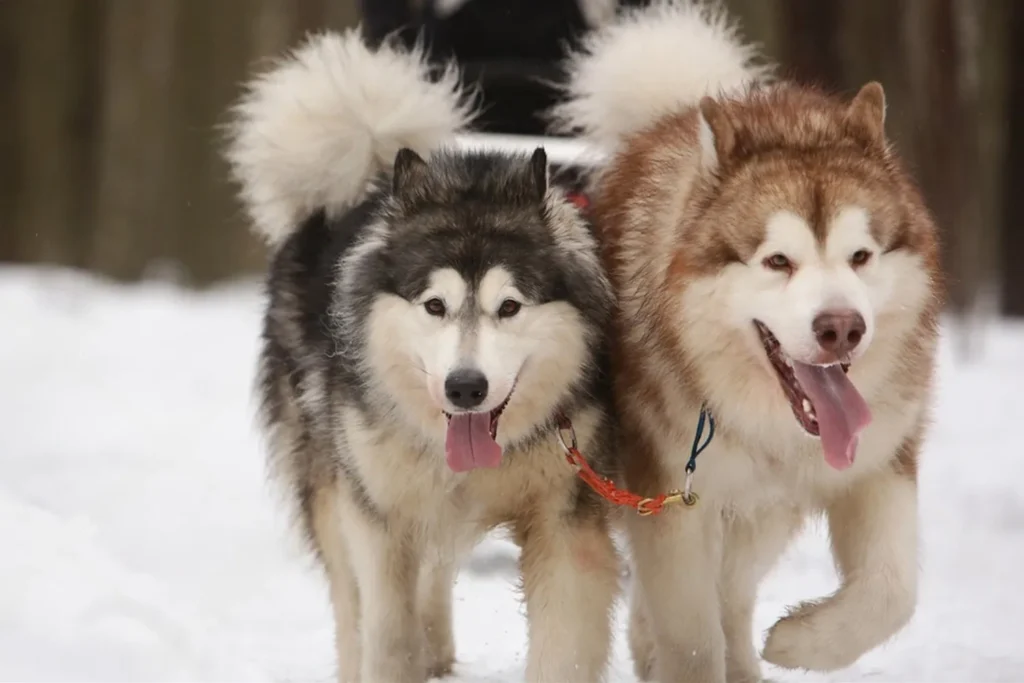
Alaskan Malamute Grooming & Shedding
Living with an Alaskan Malamute means living with a glorious, purpose built coat. They wear a dense double coat: a sturdy, weatherproof guard coat that’s not meant to be soft or long, and a thick, oily, woolly undercoat that keeps them warm and repels the cold. The design is brilliant. Those erect ears catch every sound, and that plume of a tail often curls up over their backs on icy mornings I’ve watched a friend’s Malamute tuck that tail over his nose like a built in scarf. Nature really thought of everything.
Now, about the fur. Malamutes shed year round, so plan on a light snow of hair on your floors and clothes. I keep lint rollers in the car, by the door, and mysteriously one ends up on the coffee table too. Brushing three times a week makes a big difference. I like to “line brush” part the coat and work in sections with a slicker brush, then follow with an undercoat rake to catch the fluff hiding underneath. Short, positive sessions beat marathon grooming any day; a pocket of treats and a calm voice turns it into bonding time rather than a wrestling match. Take it outside if you can your vacuum will thank you.
Twice a year they “blow” that undercoat and the hair really flies. During these weeks, plan for quick daily passes with the undercoat rake to prevent clumping and mats. I once filled a whole lawn bag in a weekend and the dog still looked like he had plenty to spare. Never shave a double coat; it can damage the way their hair protects them. If you want a pro tip, schedule one of their rare baths during a shedding peak to help release the dead fur, then dry thoroughly so no dampness lingers in the undercoat.
Bathing needs are blissfully low: once or twice a year is usually plenty because Malamutes are generally odourless. Use a dog safe shampoo, rinse well, and dry all the way down to the skin. In between, a damp cloth wipe after muddy adventures works wonders. Teeth matter too brush once or twice a week to keep tartar at bay. I keep a dog toothbrush next to my own so I don’t “forget,” and a tasty dog toothpaste makes it easier. Clip nails once or twice a month; if you hear clicking on tile, it’s time. A grinder can be gentler if clippers make your dog nervous, and having styptic powder on hand is always smart.
Do regular “head to tail” checkups at home. Peek in those upright ears for redness or swelling, take a look at the gums, and scan the skin for hot spots or irritation thick coats can hide trouble. I run my hands over the body like I’m reading braille to catch any bumps or burrs. Check the tail and between the toes too. And of course, keep up with routine vet visits so a professional can spot early signs of illness or skin issues.
Living with a Malamute’s fluff means embracing a new housekeeping routine think strong vacuum and a sense of humor but the payoff is a dog who’s built for adventure and snuggles. Groom a little, laugh a lot, and enjoy that magnificent coat doing exactly what it was meant to do.
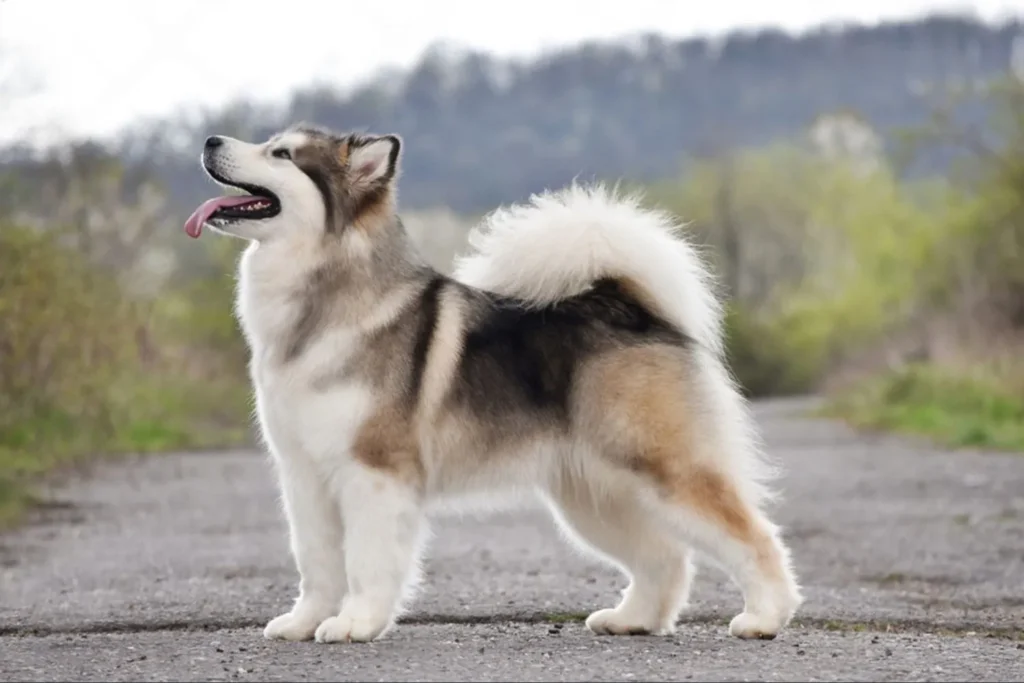
Do Alaskan Malamutes Bark a Lot?
Short answer: they’re not big barkers, but they are big talkers. Malamutes are famous for their “woo woo” conversations and soulful howls, and they’ll happily tell you about their day if you ask. My old Mal would wander over, sit in front of me, and give the most dramatic “aroo” whenever I was slow with dinner, like he was filing a formal complaint.
They love to interact verbally with people and other dogs. That urge to “sing” can pop up anytime when you come home, when a siren passes, or when a favorite toy goes missing under the couch. And if you get a few Malamutes together? One howl can spark a full on chorus. I once stood at a sled dog meetup where a single yawn turned into a neighborhood concert in under 10 seconds. It was glorious… and a little loud.
While they don’t usually bark for the sake of barking, they will use a bark to alert you someone at the door, a squirrel on the fence, a mysterious thud in the hallway. Some Malamutes bark more than others, especially if they grew up around barky breeds. Dogs learn from their environment, and if a Mal pup spends puppyhood with a chatty Beagle or Shepherd, they can pick up that habit. My friend’s Mal, raised with two terriers, mastered the “alert whoof” by six months.
If you’re hoping to keep the volume manageable, a bit of training goes a long way. Teach a “speak” and then a “quiet” cue rewarding calm moments is key. Give them plenty of exercise and mental work so the woo woos don’t become boredom chatter. I like to redirect a brewing howl with a sniffy game or a frozen chew. And if you live in close quarters, a consistent routine, white noise at nap time, and a quick check-in before they escalate can keep the serenades sweet rather than excessive.
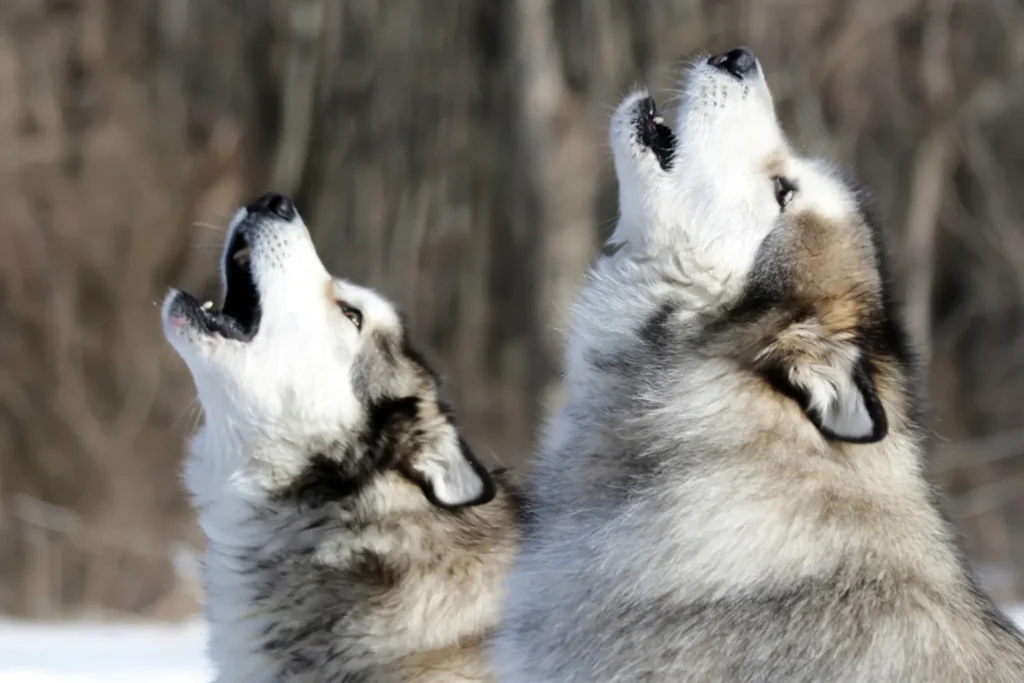
Average Weight and Height of an Alaskan Malamute
If you’re picturing a big, sturdy snow dog, you’re right on the nose. A fully grown male Alaskan Malamute typically weighs between 36 and 43 kg and stands about 61 to 66 cm at the shoulder (that’s roughly 79-95 pounds and 24-26 inches). Females are a touch lighter and shorter, usually 32 to 38 kg and 56 to 61 cm tall (about 70-84 pounds and 22-24 inches). They’re solid dogs with a lot of muscle under all that fluff, so they often feel heavier than they look. https://en.wikipedia.org/wiki/Alaskan_Malamute
Keep in mind that healthy Malamutes can fall a little outside those ranges, depending on genetics and build. My friend’s Mal, Koda, looked massive in winter because of his coat, but when we ran a hand along his ribs, he was right where he should be easy to feel, not sticking out. That’s a better day to day check than relying on looks alone. I like to do a quick at home weigh in by stepping on the bathroom scale with and without the dog, and I measure height at the withers (the top of the shoulders) using a soft tape and a wall. Pro tip: do it after a walk or a nap, not during “zoomies time,” unless you enjoy measuring a moving target.
Malamutes mature slowly, too. They often reach their adult height first and then fill out over the next several months. Don’t rush the process with extra food or heavy exercise steady, balanced meals and joint friendly activities are your best friends while they grow. If you’re ever unsure, your vet can help you fine tune their ideal weight based on body condition rather than the numbers alone.
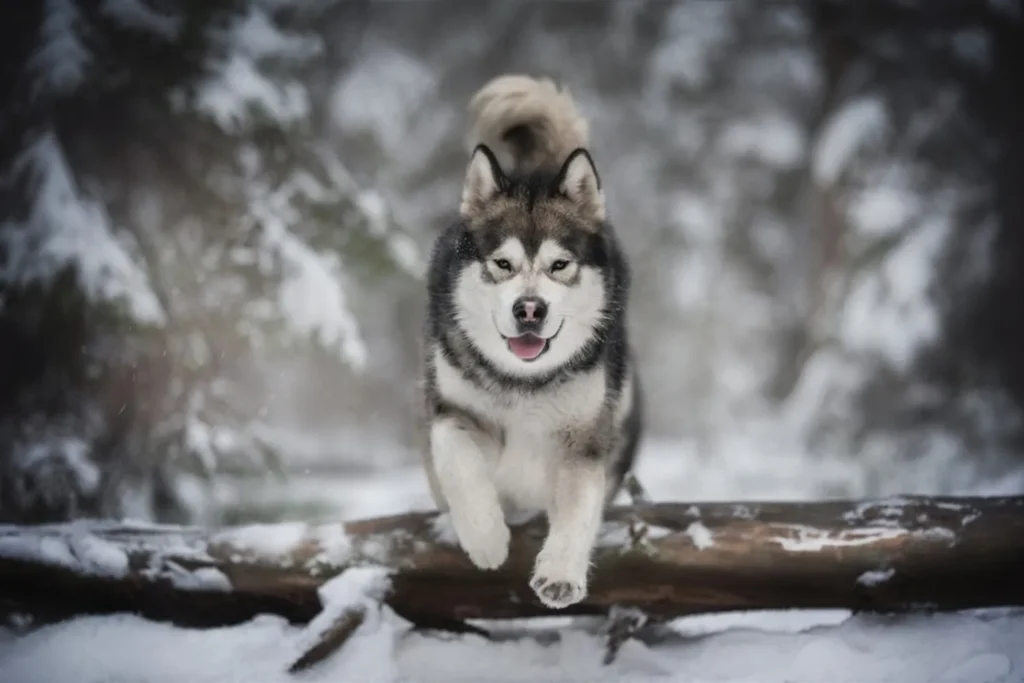
Are Alaskan Malamutes Easy to Train?
Short answer: they’re trainable, but you’ll earn every win. Malamutes are famously stubborn and wonderfully smart an entertaining combination that means they’ll learn fast, then decide whether they feel like doing it today. My first Malamute, Bear, would look me in the eye, then glance at the treat pouch as if to say, “Make it worth my while.”
Structure is your best friend. Set a routine, keep your cues consistent, and make house rules clear from day one. Short, focused sessions (5-10 minutes) work better than marathon lessons. End on a win and quit while they’re still interested. They bore easily, so keep tasks within their skill set and build up in small steps. Variety helps too: practice sits and stays on a walk, do recalls in the yard, then try the same skills on a quiet trail. Turning training into a physical challenge is pure Malamute magic think hill recalls, “heel” during a brisk hike, or a “place” command onto a rock or low platform. Sprinkle in scent games or puzzle toys to stretch their brains.
If you’ve got a big family, get everyone involved. It’s not just helpful it’s essential. Everyone should use the same words and rewards so your Malamute isn’t decoding five different languages. I learned this the hard way when my partner said “off” and I said “down”; Bear decided neither was worth listening to. Let kids (with supervision) practice simple cues like “sit” for greetings, so your dog learns how to interact politely with all ages.
Teach solid, practical commands and use them as everyday tools. Sit, down, wait, leave it, drop it, come, and settle are gold. Start in low distraction spots and slowly add more chaos as they succeed. Pair your verbal cues with clear hand signals Malamutes are visual and often respond beautifully to both.
Praise and rewards turn the lights on for this breed. Be generous when they get it right, and give a jackpot when they nail a tough ask. Keep your tone upbeat; harsh corrections usually backfire and shut them down. A well exercised Malamute is also a better student, so mix mental work with physical outlets.
Are they easy? Not exactly. But with structure, patience, and a bit of humor, you’ll watch that independent mind choose to work with you. Some days you’ll feel like you’re negotiating with a furry snowplow then you’ll see real progress, and it’s worth every minute.
How Do Alaskan Malamutes Behave? A Look at Their Temperament and Personality
Before an Alaskan Malamute trots into your life, it helps to know what you’re signing up for. These dogs are big hearted companions with big opinions, and when you understand their temperament, everything from training to daily routines gets a whole lot smoother.
Malamutes are intelligent and surprisingly quick to pick up on what you want especially if you keep training fun and upbeat. Short, game like sessions work wonders. I used to hide treats around the living room and turn recall into a goofy treasure hunt; my friend’s Malamute would practically grin while racing back for his reward. That clever mind comes with a playful streak, too. Expect goofy zoomies, enthusiastic tug games, and a dog who thinks “helping” means nosing their way into whatever you’re doing.
They’re famously friendly, often greeting new people with a wagging tail and sparkling eyes. A breeder I visited in Colorado called them “social butterflies in snow boots,” and it felt spot on. Just remember: friendly doesn’t mean low key. Malamutes have high energy and thrive on regular exercise long walks, hikes, or a solid run beside a bike if that’s your thing. On busy days, puzzle toys can save your sanity.
And yes, they can be noisy. It’s not constant barking so much as a repertoire of woo woos and chatty grumbles. I once met a Malamute in Anchorage who “sang” along with ambulance sirens impressive, if not condo friendly. Teach a quiet cue early and give them plenty to do, and that voice becomes endearing background music rather than a neighborhood announcement.
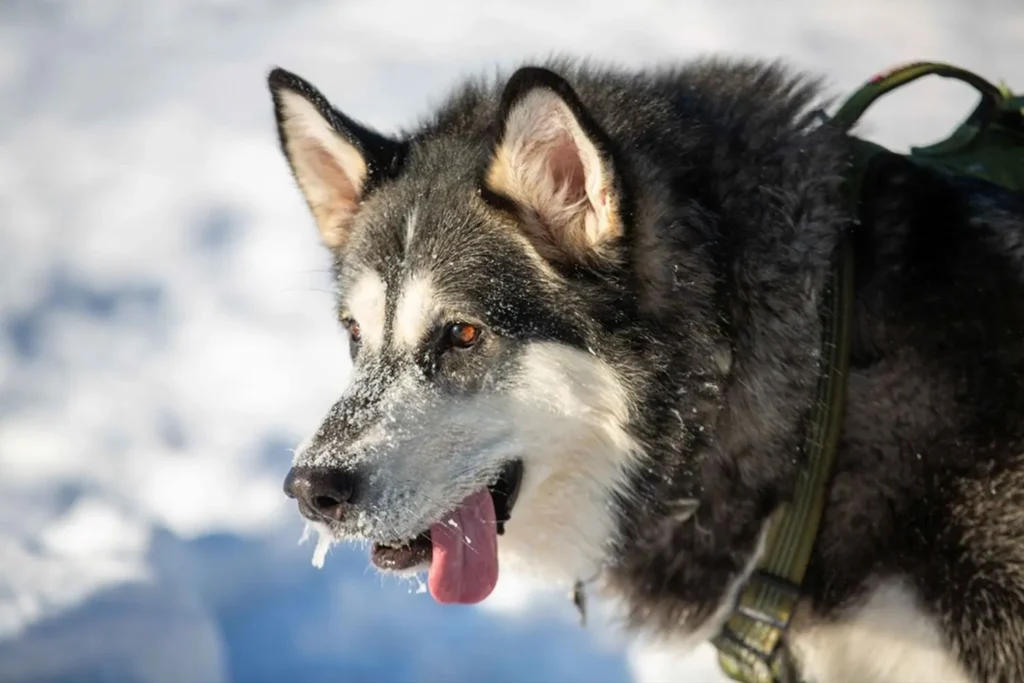
Do Alaskan Malamutes Have Common Health Issues?
Malamutes are sturdy, hard working dogs, and most are wonderfully healthy. Still, like with any breed, there are a few things worth keeping an eye on so you can catch issues early. Regular vet checkups, keeping them lean, and smart exercise go a long way. I remember my boy, Moose, getting a little stiff after a big mountain hike; our vet suggested more low impact miles and less leaping off boulders. A couple tweaks, and he bounced right back.
Hip dysplasia is one to watch for. It’s when the thigh bone doesn’t fit quite right into the hip socket, which can lead to arthritis as they age. Signs can be subtle: a “bunny hop” run, reluctance with stairs, or stiffness after naps. Ask breeders about hip evaluations (like OFA scores), keep your Malamute at a healthy weight, and focus on joint friendly exercise such as brisk walks and swimming. Ramps instead of jumps are your friend.
Cataracts can show up young in this breed. You might notice a cloudy look to the eyes or your dog bumping into things at dusk. If a dog has hereditary cataracts, they shouldn’t be bred. Annual eye exams with a veterinary ophthalmologist are a smart idea, and in some cases surgery can restore vision. A friend’s Mal had juvenile cataracts and, after surgery, was back to zooming down the hallway like a puppy.
Chondrodysplasia, sometimes called dwarfism, shows up as unusually short or bowed limbs. Ethical breeders screen to avoid it. If you do have a dog with it, think “comfort first”: non slip rugs, controlled activity, and close guidance from your vet to prevent strain.
Hypothyroidism can show as a dry, coarse coat, and often comes with weight gain, low energy, or recurring skin issues. A simple blood test confirms it, and daily medication is usually affordable and very effective. I fostered a Mal who turned from sluggish to playful in a few weeks once we started treatment his coat softened up too.
Bottom line: Malamutes aren’t fragile, but being proactive pays off. Know your breeder’s health testing, keep up with routine vet visits, and trust your gut if something seems off. Your big fluffy buddy will thank you with years of adventure.
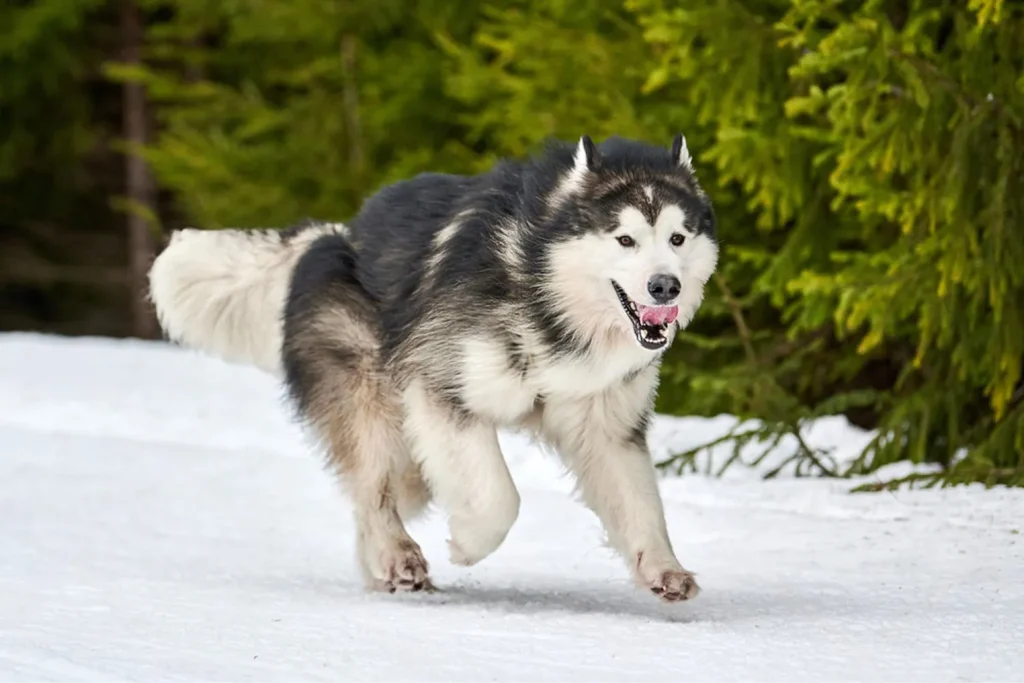
How Long Do Alaskan Malamutes Live?
You can expect an Alaskan Malamute to share your life for about 12 to 15 years. For a big, brawny working dog, that’s a wonderfully solid stretch. My neighbor’s Malamute, Kodiak, made it to a spry 14 and celebrated with a snowball shaped pupcake he still tried to pull me down the street like a sled.
A lot of longevity comes down to the basics done well. Keep them lean (extra pounds are tough on those joints), give them daily exercise that mixes steady walks with chances to trot and sniff, and build muscle without overdoing high impact play when they’re young. Regular vet checkups, hip and elbow screenings, and good dental care go a long way. Malamutes also need mental work puzzle toys, scent games, or a casual backpack hike because a busy brain makes a calmer, healthier dog. And don’t forget heat management; these snow lovers thrive in cool temps, so plan workouts for mornings and shade in summer. Genetics play a role too, so if you can, choose a responsible breeder or ask for health history when adopting. With that kind of care, those 12 to 15 years can be packed with adventure.
How Much Should an Alaskan Malamute Eat?
Malamutes are hearty workers with hearty appetites. For adults, plan on 3 to 4 cups of high-quality food per meal, twice a day. That’s a solid starting point, and you can fine tune based on your dog’s activity level and the calorie density of the food. I like to measure with an actual scoop (or even weigh kibble on a kitchen scale) because a “cup” can get a little generous when you’re in a hurry. Keep an eye on body condition: you should feel ribs under a light layer of padding and see a defined waist. My Malamute, Koda, always needs a bit more in winter when we’re doing long hikes, and a bit less during lazy, hot weeks.
Puppies are a different story. They do best with four small meals a day, spaced about 4 to 5 hours apart. It keeps their energy steady and is easier on little tummies. Choose a high-quality large breed puppy formula, and resist the urge to overfeed slow, steady growth is healthier for their joints. As your pup matures, you can gradually move to three meals, then down to two in adulthood.
A few feeding tips I’ve learned the hard way: use a slow feeder bowl if your Malamute inhales food (it turns dinner into a fun puzzle and helps prevent gulping). Keep fresh water available at all times. Go easy on treats aim for no more than about 10% of daily calories and balance big training days by trimming dinner slightly. And try to avoid hard play right before or after meals; a little rest around feeding time is a good habit for a deep chested breed like the Malamute.
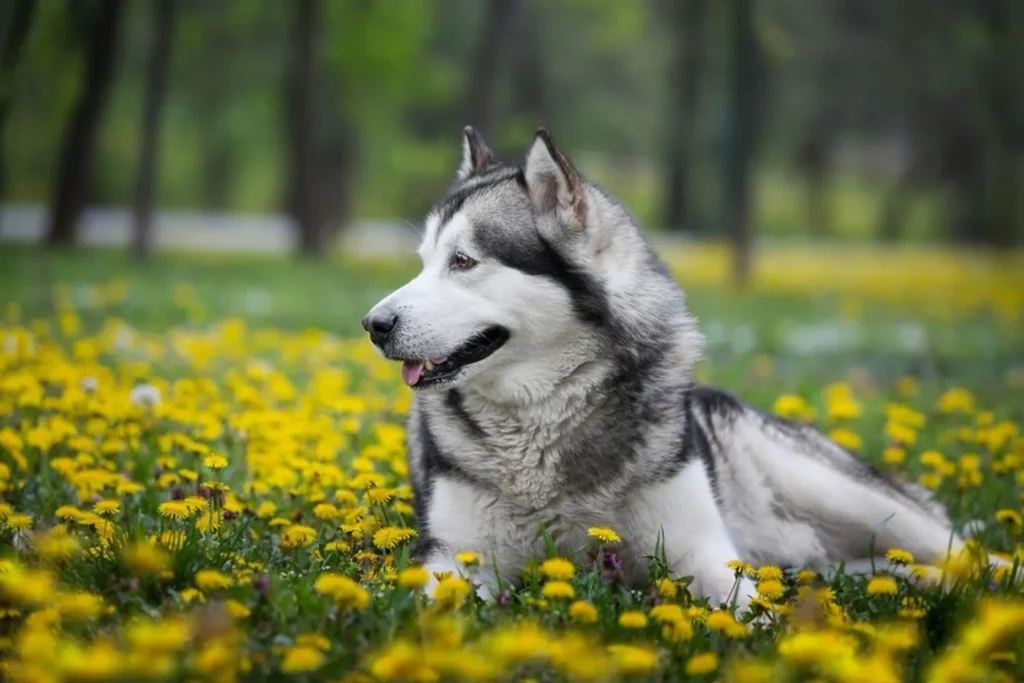
Alaskan Malamute FAQs
Does an Alaskan Malamute require professional grooming?
You can absolutely handle most Malamute grooming at home. A good slicker brush, an undercoat rake, and some patience go a long way with that glorious double coat. I brush mine weekly and step it up to daily during “coat blow” season when the fluff comes out in clouds. That said, regular professional grooming can be a huge help. A pro can do a thorough de shed, trim nails, clean ears, and send your dog home feeling (and smelling) fantastic. I booked a groom during spring shed once and watched enough fur come out to stuff a pillow my vacuum thanked me. Quick tip: don’t shave a Malamute’s coat; it’s their built in climate control.
Is an Alaskan Malamute ideal for a first time dog owner?
Probably not. Malamutes are strong, smart, and independent, and they need consistent training and clear boundaries. They’re happiest with confident owners who understand large, powerful breeds and have time for daily exercise and structure. A friend of mine brought home a Malamute as a first dog because “he looked like a big teddy bear.” Two weeks later she was in a training class learning how to channel all that energy and stubbornness. It turned out great, but it was a lot of work. If you’re new to dogs and truly set on a Mal, line up a trainer, plan on plenty of exercise, and be ready to practice obedience every day.
Do Alaskan Malamutes suffer from separation anxiety?
They can. Malamutes are pack minded and really flourish when they’re around their people or other dogs. They need both mental and physical stimulation, or they’ll create their own “projects” (like redecorating your trash can). A calm routine before you leave some attention, a good walk, a few minutes of training can help eliminate this kind of stress for many Malamutes. I started leaving after a 15-minute backyard fetch and a frozen puzzle toy, and my dog went from pacing to snoring by the time I closed the door. Rotate toys, offer sniffy walks, consider doggy daycare or a trusted walker, and keep departures low key.
Are Alaskan Malamutes hypoallergenic dogs?
No, Malamutes are not hypoallergenic. They shed heavily, especially seasonally, and produce dander that can trigger allergies. If allergies are a concern, spend time with the breed first to see how you react. In my house, a HEPA air purifier, frequent vacuuming, and washing dog bedding weekly make a noticeable difference and I keep a lint roller in every room for good measure.
Disclaimer:
This article is for informational purposes only and doesn’t replace professional veterinary or training advice. Always consult a certified vet or dog trainer for guidance specific to your pup.
